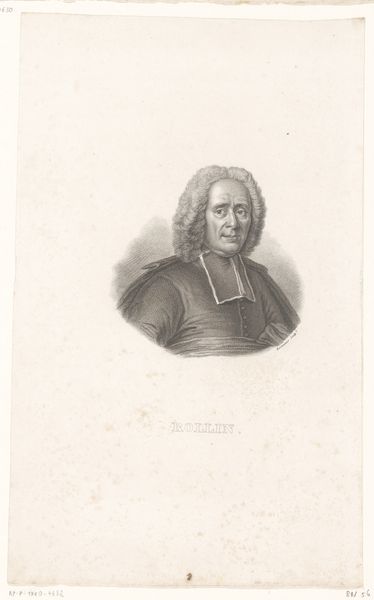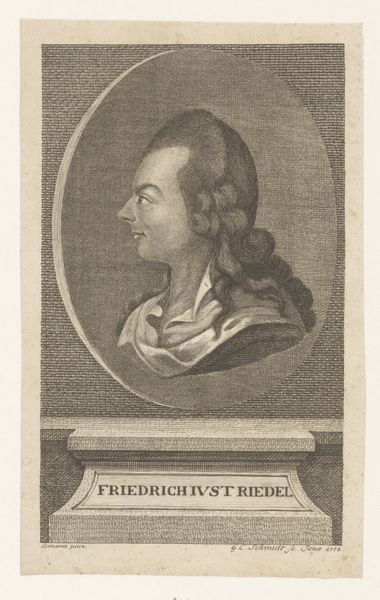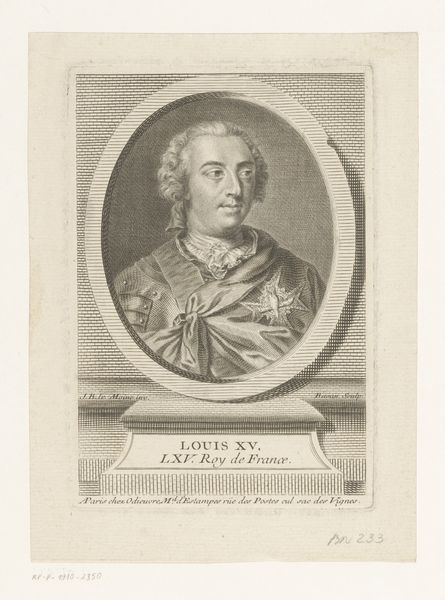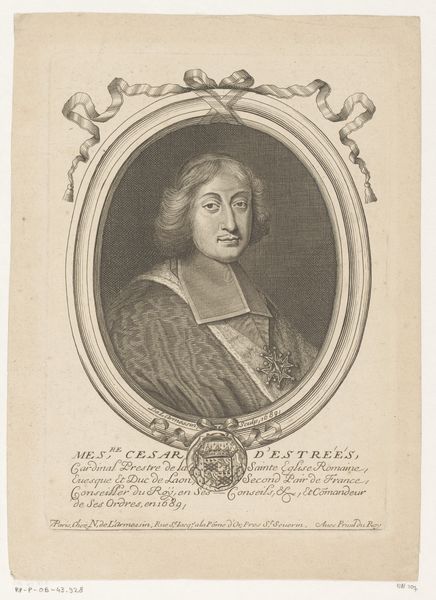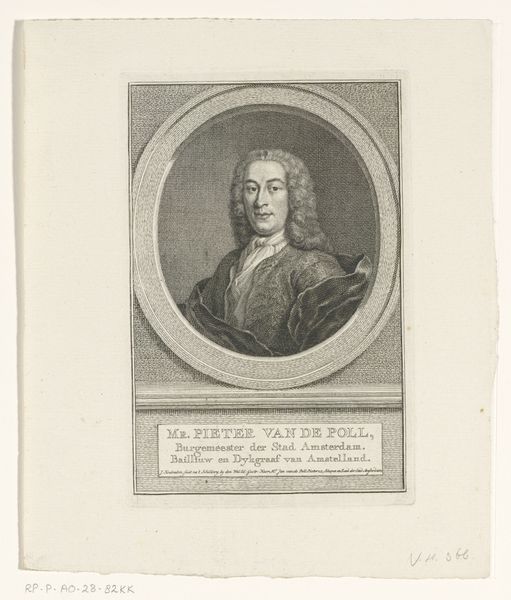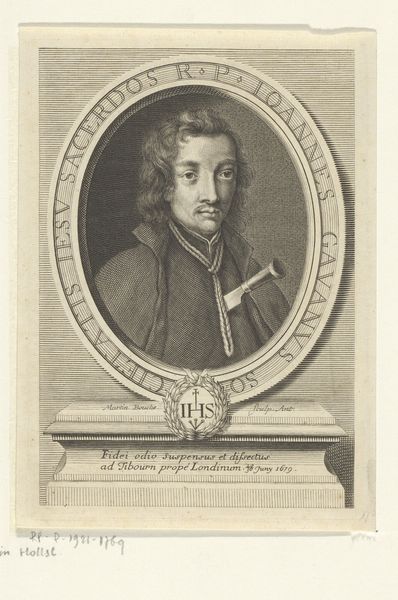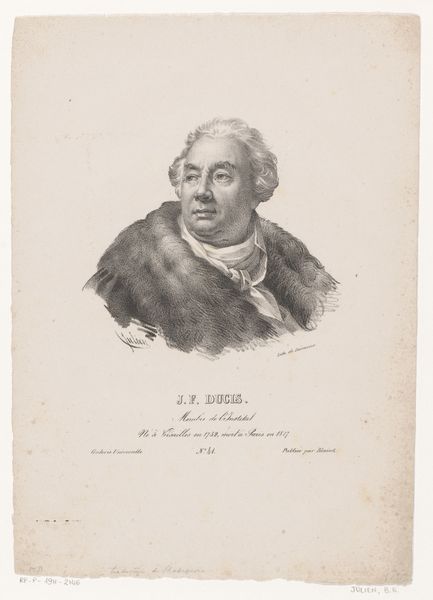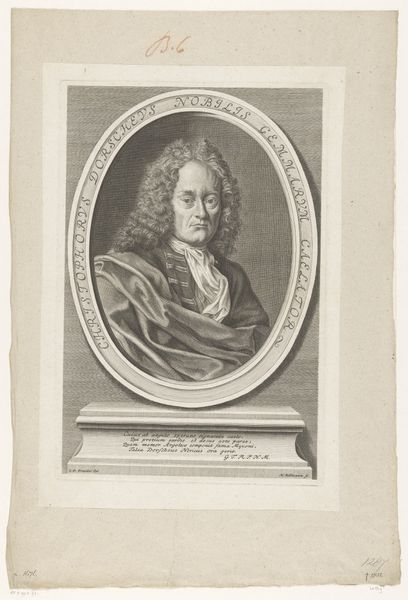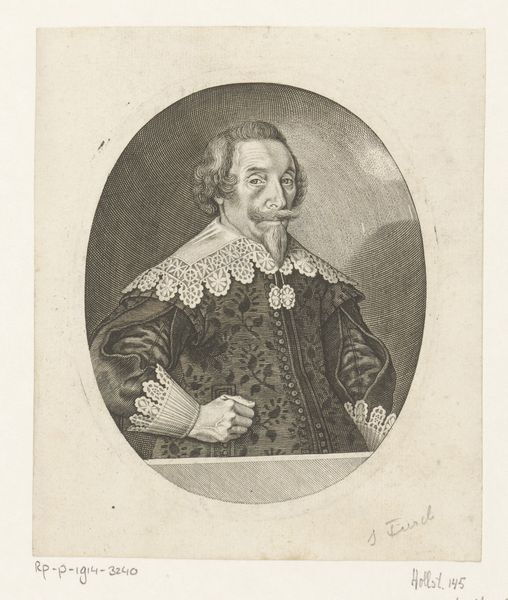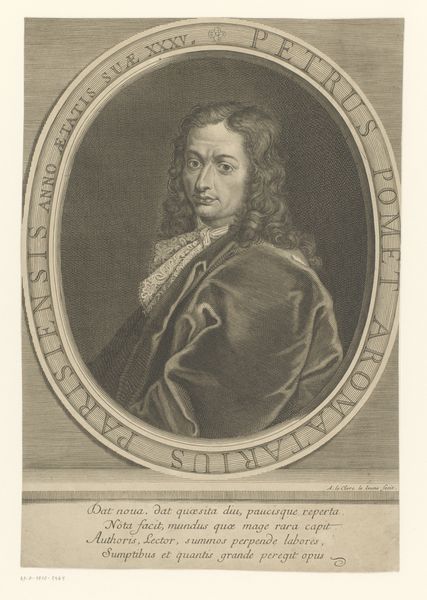
print, engraving
#
portrait
# print
#
old engraving style
#
personal sketchbook
#
pencil drawing
#
history-painting
#
engraving
#
realism
Dimensions: height 220 mm, width 160 mm
Copyright: Rijks Museum: Open Domain
Carel Christiaan Antony Last made this portrait of Tsar Peter the Great using lithography, a printmaking process that allows for incredibly fine detail. The image is built up through layers of ink applied to a flat stone or metal plate. The artist exploits the naturally greasy quality of the lithographic crayon to create an image that’s then chemically fixed to the surface. It's a process that bridges drawing and printing, and was particularly well-suited to portraiture, allowing for the reproduction of subtle tonal gradations that convey the texture of skin, hair, and fabric. Consider the social context of this work: lithography emerged as a relatively inexpensive and efficient method for mass-producing images, making portraits like this accessible to a wider audience than traditional painted portraits. The labor involved shifted from individual craftsmanship to a more industrialized process, reflecting the changing landscape of art production and consumption in the 19th century. The choice of lithography speaks to a desire to democratize art, challenging traditional hierarchies between original and reproduction, craft and fine art.
Comments
No comments
Be the first to comment and join the conversation on the ultimate creative platform.
